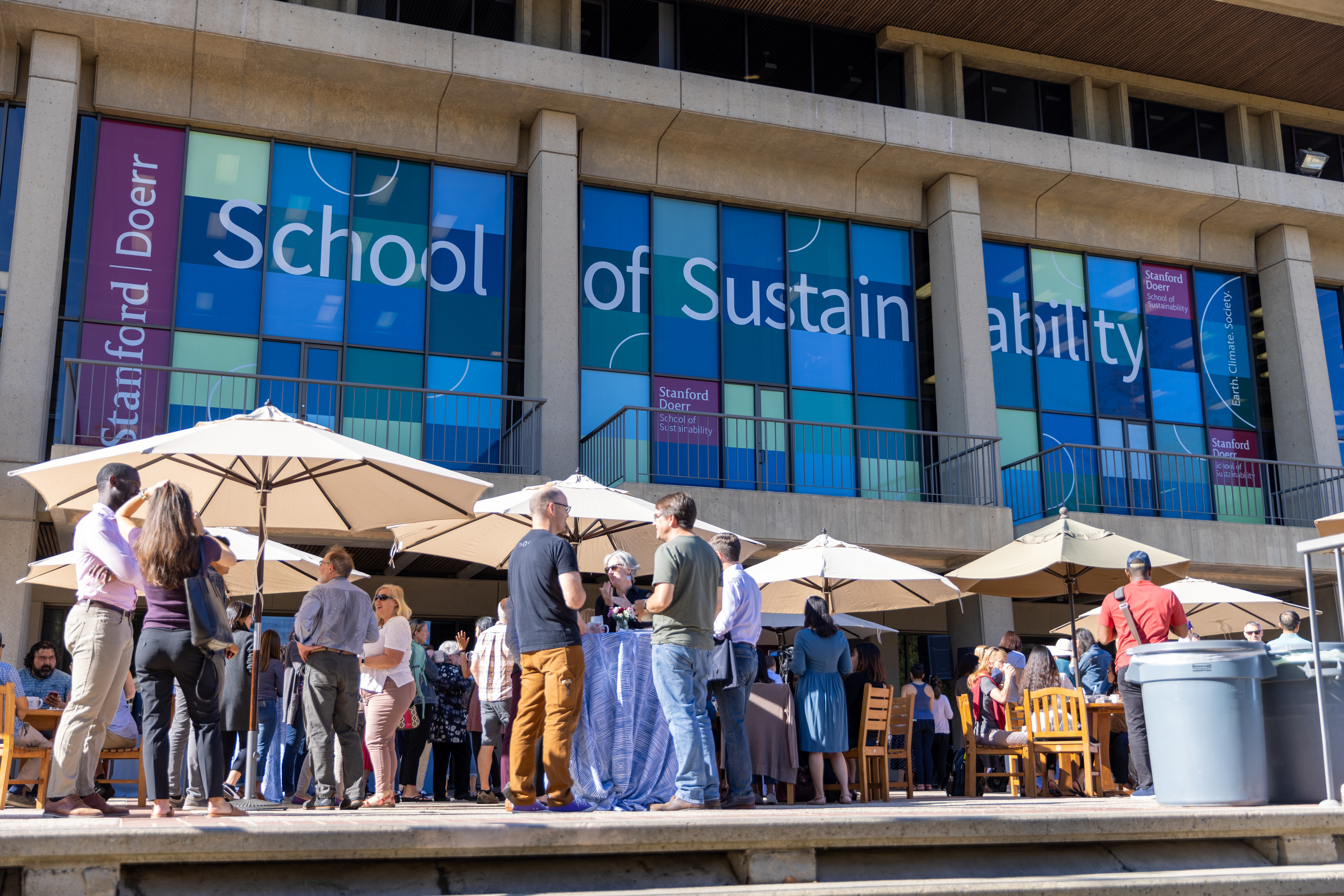How can students navigate the shifting landscape of careers in sustainability? Stanford Alumni in Sustainability hosted Andy Marshall Ph.D. ’08, Caroline Ling MBA ’22 M.S. ’22 and Irys Kornbluth ’11, who addressed this question during a discussion on how economies can grow sustainably with finite resources on Tuesday.
The event, “Approaches to Creating a Circular Economy,” is part of a new initiative by the newly formed alumni group, co-founded by David Geeter ’11, Cathy Luo ’22 M.S. ’23, Laura Jacobsen ’18 M.S. ’19 and Claudia Cogut M.A. ’14 to connect alumni and current students while they navigate dynamic landscape for sustainability.
The circular economy model rethinks how resources in the linear “take-make-dispose” production lines can be given another life. Marshall described a circular economy as “an evolution to lean manufacturing” that seeks to minimize waste along the supply chain and imagine how materials can re-enter the production cycle after they have served their initial purposes.
From diverging sectors, each speaker acknowledged various forms of circular economy. Kornbluth, who is the co-founder and chief operating officer of textile recycling platform company Everywhere, said going circular for the textile-to-textile industry would mean “keeping [materials] within one product type cycle.” For example, t-shirts thrown away would ideally be recycled into another piece of clothing, instead of insulation.
On the other hand, Marshall’s vision of circularity involves returning waste material into higher-value supply chains, or upcycling. With Nine Lives Fluorochemicals, a company he founded during the pandemic, Marshall aims to repurpose used refrigerants at scale to create chemical products in the agrochemicals and plastics industry.
Marshall and Kornbluth agreed that a challenge is transforming existing infrastructure built for linear production, where products are not expected to be reintegrated into the system.
“Folks who are in this industry are very risk-averse,” Marshall said. “They work in industries that have very low margins.”
Unlike the refrigerant commodity market where regulations slowly phase out, the fashion industry faces more demands from younger consumers for transparency and sustainability to transform.
“Large established brands do want to become more sustainable and circular,” Kornbluth said. “But they can only afford to do that with a small percentage of their product line at a time.”
Kornbluth said she thinks the industry is still testing if sustainability makes economic sense, but she is optimistic that this trend will expand to more products.
However, systems-scale change like the supply chain revolution for the circular economy takes time and faces many challenges. Ling, who recently joined McKinsey as an environmental, social and corporate governance (ESG) associate after graduating from the Stanford Graduate School of Business last year, said there are no consistent standards for measuring circularity.
“You can’t just walk into a board meeting and say, ‘our circularity is one hundred out of one hundred,’ right? That doesn’t mean anything,” Ling said.
Kornbluth said another major obstacle was the global dispersion of supply chains and lack of transparency. According to Kornbluth, the scattered supplier networks makes assessments more difficult: “It usually takes us a few months at least to even understand how they are sourcing today and where we could fit into that picture.”
The economies of scale necessary for waste upcycling to be profitable can become expansive without a good collection system, Kornbluth said. For better or worse, Kornbluth’s operations have not been short of textile waste to recycle.
However, he said lack of infrastructure to aggregate and sort waste for plastics can pose a barrier for start-ups to engage in circularity. “There’s a reason I chose not to go into plastics, and that’s pretty much it,” Marshall added half-jokingly.
Ling added that the circular supply chain field is quickly evolving. “There’s really no playbook for this field.”
“There’s all sorts of amazing innovations to change the way [companies] operate in business and to stay relevant in the market. Everyone is coming in with this beginner’s mindset,” Ling said.
Echoing Ling, Kornbluth said “When I first got into sustainable fashion, it was a very amorphous thing. I never thought that fifteen years later, I’d be here still, doing it with an insane amount of energy.”
With a rapidly changing landscape for sustainability Ling hopes students continue to be resilient. “It is a marathon,” she said. “It’s true in any career, but especially when you want to make system level change.”
Kornbluth concluded with similar advice for current students and recent graduates: “If you have a specific interest within [sustainability], just really stick with that, because it will likely be its own field in about fifteen years.”
